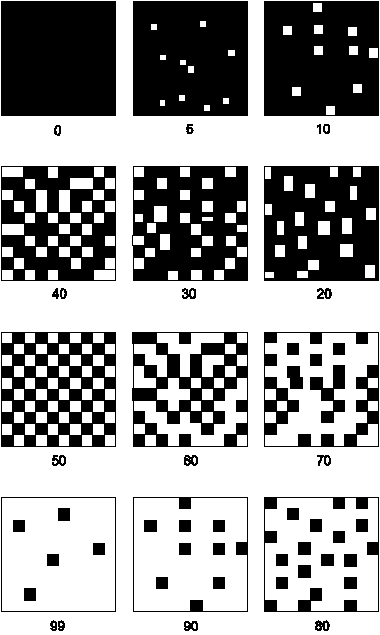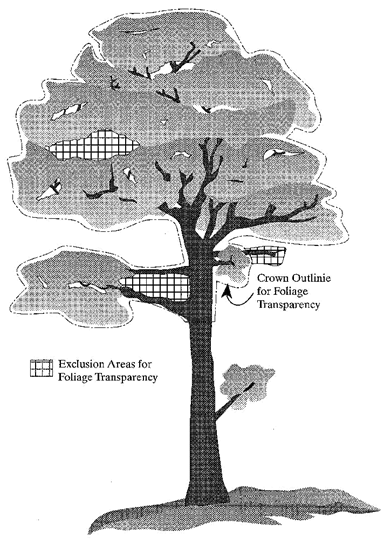49 Foliage transparency
Dictionary: d_foliage_transparency
Method:
Estimate foliage transparency in 5% classes based on the live, normally foliated portion of the crown and branches using the transparency diagram (Fig. 1).
Dead branches, crown dieback and missing branches where foliage is expected to be missing are excluded from the estimate (Fig. 2).
Large uniform crowns are scored as if the whole crown should be foliated.
When defoliation is severe, branches alone will screen the light, but the surveyors should exclude the branches from the foliage and rate the area as if light was penetrating.
For example, an almost completely defoliated dense spruce may have less than 20% light coming through the crown, but it will be scored as highly transparent because of the missing foliage. Old trees, and some broad-leaved species, have crown characteristics with densely foliated branches which are spaced far apart in the crown. These spaces between branches should not be included in the foliage transparency score. When foliage transparency in one part of the crown differs from another part, the average foliage transparency is estimated and recorded.
Hint:
The easiest way to assess foliage transparency is first to mentally draw a two-dimensional crown outline. Then block the foliated area into the crown outline. Lastly, estimate the transparency of this foliated area.
Figure 1: Transparency diagram (derived from Tallent-Halsell, 1994):

Figure 2: Crown outline to be taken into account when estimating foliage transparency (derived from Tallent-Halsell, 1994):
Note the areas to be excluded from the estimates.
This is a free standing tree, therefore the assessable crown covers a rather large area.
Hint: Stem and dead branches have to be deleted from the estimate as well.
